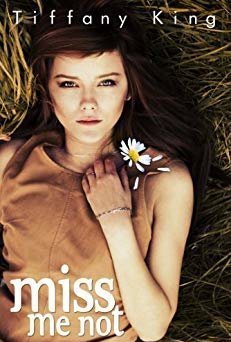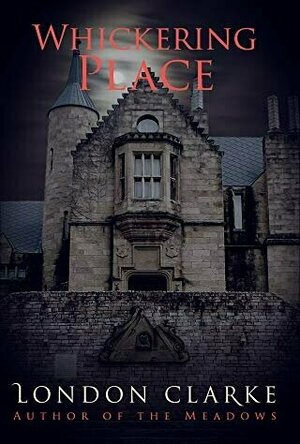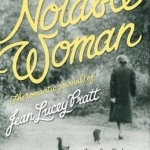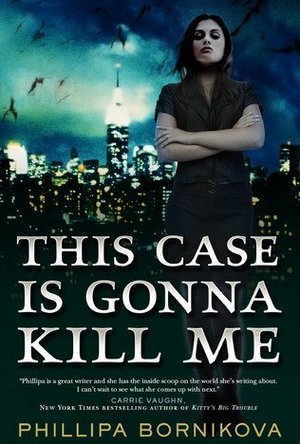Search
Search results
Movie Metropolis (309 KP) rated The Fate of the Furious (2017) in Movies
Jun 11, 2019
Spectacularly Dumb
With box office takings of over $1.5billion, it was obvious that Universal Pictures would never let Furious 7 be the end of a multi-billion dollar franchise, no matter what many fans truly wanted.
The previous instalment was also, surprisingly, warmly received by critics who were impressed with how sensitively the naturally bombastic series handled the death of lead star Paul Walker. Two years on, the crew are back with Fast and Furious 8; does it do enough to keep the franchise on a high?
Now that Dom (Vin Diesel) and Letty (Michelle Rodriguez) are on their honeymoon, Brian and Mia have retired from the game, and the rest of the crew have been exonerated, the plucky team of globetrotters has found a normal life of sorts. But when a mysterious woman (Charlize Theron) seduces Dom back into a world of crime that he can’t seem to escape from, the rest of the gang will face things that will test them like never before.
Newcomer to the franchise, director F. Gary Gray (Law Abiding Citizen, The Italian Job) manages to craft what is perhaps the most ridiculous entry in the series to date, plagued with tonal imbalances and plot holes so big you could fit the QE2 into them with ease. But you know what? It’s probably the most fun you’ll have in the cinema all year.
The cast are all reunited, barring Paul Walker’s Brian and those publicised rifts between Vin Diesel and Dwayne Johnson are nowhere to be seen as everyone on screen appears to be having the time of their lives. New recruit Charlize Theron adds a level of class to proceedings as steely supervillain, Cipher. She’s a cracking addition to the series and her acting prowess oozes from every pore, despite the often clunky dialogue.
Of course, successful predecessors command bigger budgets for their follow-ups and Furious 8 is no exception. $250million was spent on creating this film and it shows. It’s a feast for the eyes with explosions, shiny cars, stunning locations and breath-taking special effects. The result is frankly exceptional. From Cuba to NYC and from Berlin to Russia (actually filmed in Iceland), the vistas are nicely filmed and beautifully executed.
The action sequences are also choreographed very well, but from a franchise built on these foundations, I’d expect nothing less. In particular, a street chase through New York City is edge of your seat stuff as literally hundreds of vehicles worm their way through its congested streets.
Negatives? Well, the story is awkward despite some decent twists, the aforementioned plot holes cause a few headaches for a series that prides itself on continuity and some of the comedic elements are poorly placed, but in this eighth outing, much of that can be forgiven. After all, what other franchise could survive eight films and still prove as exciting as its first?
Overall, Fast and Furious 8 is unashamedly ridiculous but who cares? With exceptional special effects and a great new adversary in Charlize Theron, the series once again manages to surpass expectation. Each film tries its best to outdo its predecessor and before long, we’ll no doubt be heading to Mars with the gang. I’m up for that. Are you?
https://moviemetropolis.net/2017/04/13/spectacularly-dumb-fast-furious-8-review/
The previous instalment was also, surprisingly, warmly received by critics who were impressed with how sensitively the naturally bombastic series handled the death of lead star Paul Walker. Two years on, the crew are back with Fast and Furious 8; does it do enough to keep the franchise on a high?
Now that Dom (Vin Diesel) and Letty (Michelle Rodriguez) are on their honeymoon, Brian and Mia have retired from the game, and the rest of the crew have been exonerated, the plucky team of globetrotters has found a normal life of sorts. But when a mysterious woman (Charlize Theron) seduces Dom back into a world of crime that he can’t seem to escape from, the rest of the gang will face things that will test them like never before.
Newcomer to the franchise, director F. Gary Gray (Law Abiding Citizen, The Italian Job) manages to craft what is perhaps the most ridiculous entry in the series to date, plagued with tonal imbalances and plot holes so big you could fit the QE2 into them with ease. But you know what? It’s probably the most fun you’ll have in the cinema all year.
The cast are all reunited, barring Paul Walker’s Brian and those publicised rifts between Vin Diesel and Dwayne Johnson are nowhere to be seen as everyone on screen appears to be having the time of their lives. New recruit Charlize Theron adds a level of class to proceedings as steely supervillain, Cipher. She’s a cracking addition to the series and her acting prowess oozes from every pore, despite the often clunky dialogue.
Of course, successful predecessors command bigger budgets for their follow-ups and Furious 8 is no exception. $250million was spent on creating this film and it shows. It’s a feast for the eyes with explosions, shiny cars, stunning locations and breath-taking special effects. The result is frankly exceptional. From Cuba to NYC and from Berlin to Russia (actually filmed in Iceland), the vistas are nicely filmed and beautifully executed.
The action sequences are also choreographed very well, but from a franchise built on these foundations, I’d expect nothing less. In particular, a street chase through New York City is edge of your seat stuff as literally hundreds of vehicles worm their way through its congested streets.
Negatives? Well, the story is awkward despite some decent twists, the aforementioned plot holes cause a few headaches for a series that prides itself on continuity and some of the comedic elements are poorly placed, but in this eighth outing, much of that can be forgiven. After all, what other franchise could survive eight films and still prove as exciting as its first?
Overall, Fast and Furious 8 is unashamedly ridiculous but who cares? With exceptional special effects and a great new adversary in Charlize Theron, the series once again manages to surpass expectation. Each film tries its best to outdo its predecessor and before long, we’ll no doubt be heading to Mars with the gang. I’m up for that. Are you?
https://moviemetropolis.net/2017/04/13/spectacularly-dumb-fast-furious-8-review/
Leanne Crabtree (480 KP) rated Miss Me Not in Books
Sep 3, 2019
Note: This has been on my Kindle for years--literally! I've decided every so often when there's not a book I've bought that I'm just dying to read that I'll start reading my backlog of books from the earliest bought. This was #1 - from 2013. I'm not doing bad, I only have one more book from 2013 before I start the ones from 2014. Yay!
*-*-*-*-*
This covers some rather dark topics like suicide and physical abuse. On the first page we learn of a student's suicide and Madison's feelings about it. And then the fact that she has a sort of suicide pact with her only friend. It's quite a punch to the gut that these 17 year olds feel so low due to family situations that they want to end things.
Madison had a very unconventional childhood with parents who took no notice of her at all and in an effort to gain any sort of attention from them she acted out in the past until the unthinkable happened when she was just 13. I understand how stuff like that can warp you when it happens at such a young age.
Then a ray of light appears in the form of Dean--all round good guy. He's been asked to tutor her so she doesn't flunk a class. He's determined to be her friend after watching her for years and seeing her "fade into the background" behaviour. Things progress from friendship into romance over time and we get a rather sweet romance between Dean and Madison. He's very protective of her.
Of course, things don't always go the way you want and someone close to Madison commits suicide throwing her back into the darkness of grief. Luckily, she now has a strong support system in place with Dean and his family and they manage to keep her grounded.
I thought it ended a little abruptly but it was a sweet young adult romance that covered some hard hitting topics.
Another note: Suicide does seem to be a big issue in teenagers around the world and this book does a good job of highlighting it. It doesn't seem fair to me for teens to be that low that they take their own lives. They've barely started living and they ready to die already? That's not right. I've had a few good cries while reading this.
*-*-*-*-*
This covers some rather dark topics like suicide and physical abuse. On the first page we learn of a student's suicide and Madison's feelings about it. And then the fact that she has a sort of suicide pact with her only friend. It's quite a punch to the gut that these 17 year olds feel so low due to family situations that they want to end things.
Madison had a very unconventional childhood with parents who took no notice of her at all and in an effort to gain any sort of attention from them she acted out in the past until the unthinkable happened when she was just 13. I understand how stuff like that can warp you when it happens at such a young age.
Then a ray of light appears in the form of Dean--all round good guy. He's been asked to tutor her so she doesn't flunk a class. He's determined to be her friend after watching her for years and seeing her "fade into the background" behaviour. Things progress from friendship into romance over time and we get a rather sweet romance between Dean and Madison. He's very protective of her.
Of course, things don't always go the way you want and someone close to Madison commits suicide throwing her back into the darkness of grief. Luckily, she now has a strong support system in place with Dean and his family and they manage to keep her grounded.
I thought it ended a little abruptly but it was a sweet young adult romance that covered some hard hitting topics.
Another note: Suicide does seem to be a big issue in teenagers around the world and this book does a good job of highlighting it. It doesn't seem fair to me for teens to be that low that they take their own lives. They've barely started living and they ready to die already? That's not right. I've had a few good cries while reading this.

Glass Road
Games
App
Glass Road is the official digital version of Uwe Rosenberg's Glass Road board game. STORY: The...
Ok this was steamy and dreamy. The author did this couple justice in bringing them together with her word magic. We continue one month later after the First Sight. Beth is back at work and moving forward with her business as a designer. When out of nowhere Adam Blaire finds her and presents her with a deal she doesn’t want to turn down.
Okay I enjoyed this couple in the prequel but they had me falling deeper in this book. Beth doesn’t do emotions she doesn’t want or need the baggage. But with the way Adam is digging his way under her skin she might not have a choice. But when Adam gives her ultimatums and leaves her at the door she walks away. Can they find their way back to each other or will their beginning be their end?
Man I’ve read some steamy books in my life but this one is at the top. Adam is just wow. He has stamina out of this world. The way he loves her and gives himself to her. Dream come true. Beth just does it without knowing she’s doing it. Gives him her all without fully knowing she did it.
If you're reading this review before buying this book you're wasting precious reading time. You could’ve already been in love with this author like me.
Okay I enjoyed this couple in the prequel but they had me falling deeper in this book. Beth doesn’t do emotions she doesn’t want or need the baggage. But with the way Adam is digging his way under her skin she might not have a choice. But when Adam gives her ultimatums and leaves her at the door she walks away. Can they find their way back to each other or will their beginning be their end?
Man I’ve read some steamy books in my life but this one is at the top. Adam is just wow. He has stamina out of this world. The way he loves her and gives himself to her. Dream come true. Beth just does it without knowing she’s doing it. Gives him her all without fully knowing she did it.
If you're reading this review before buying this book you're wasting precious reading time. You could’ve already been in love with this author like me.
Darren (1599 KP) rated Boys Don't Cry (1999) in Movies
Jul 25, 2019
Story: Boys Don’t Cry starts with Teena (Swank) a young woman that wants to become a man, she uses the name Brandon to go around small American towns looking to pick up women, which has got her in trouble in the past.
On his latest trip she finds a new group of people, with Lana (Sevigny) taking her eye, with her friends and family including John (Sarsgaard), Tom (Sexton III), Candace (Goranson) all welcoming her into the group as Brandon, when her true identity is revealed there will be shocking consequence.
Thoughts on Boys Don’t Cry
Characters – Teena is a young woman that is preparing for her sex change, before that she is going around as a young man Brandon, trying to meet women. She meets a young lady in Lana, makes new friends, but she is on the run which will soon catch up with her. This is a based on a real person that is going through the difficult process of wanting to have a sex change. Lana is the young lady that Brandon takes a shine to, she lives the dead end life that she isn’t enjoying and Brandon brings a new feeling about it, though she is left in a difficult position when the truth comes out. John and Tom are two of the group of friends that happily welcome Brandon into their group, when they learn the truth, they will go to extreme measures to get revenge.
Performances – Hilary Swank went on to win an Oscar for her role in the film, you can see why because she is fantastic in the difficult role. Chloe Sevigny shows us jus how her supporting role she can make a huge impact in the film. Peter Sarsgaard and Brendon Sexton III both are disturbing in their roles in the film which shows just how they could make to truly disgusting human beings come to life.
Story – The story here follows a young lady preparing for a sex change, that would go around looking for women, only for her secret to come back when the prejudice locals can’t deal with people somebody they can’t explain in their lives. This is a film way before it own time, even though it is only 20 years old, it is based on the real crime which would easily have been given a bigger spotlight in todays world. we do step into the world of transgenders, which is always difficult to word correctly because it is a sensitive subject. What occurs in the film is surprising and shocking that you couldn’t see happening.
Biopic/Crime/Romance – The film uses the biopic side of the film to show the romance and crime against Brandon Teena a young transgender that is still wanting to figure out how to get through the sex change.
Settings – The film keeps us in the locations which shows how the smaller towns can operate and have mindsets that don’t accept people that are different.
Scene of the Movie – The first night together.
That Moment That Annoyed Me – The actions of the men.
Final Thoughts – This is one of the most difficult movies you will see, it has a sensitive subject on the table which will show the way people can act towards people.
Overall: Must watch movie.
On his latest trip she finds a new group of people, with Lana (Sevigny) taking her eye, with her friends and family including John (Sarsgaard), Tom (Sexton III), Candace (Goranson) all welcoming her into the group as Brandon, when her true identity is revealed there will be shocking consequence.
Thoughts on Boys Don’t Cry
Characters – Teena is a young woman that is preparing for her sex change, before that she is going around as a young man Brandon, trying to meet women. She meets a young lady in Lana, makes new friends, but she is on the run which will soon catch up with her. This is a based on a real person that is going through the difficult process of wanting to have a sex change. Lana is the young lady that Brandon takes a shine to, she lives the dead end life that she isn’t enjoying and Brandon brings a new feeling about it, though she is left in a difficult position when the truth comes out. John and Tom are two of the group of friends that happily welcome Brandon into their group, when they learn the truth, they will go to extreme measures to get revenge.
Performances – Hilary Swank went on to win an Oscar for her role in the film, you can see why because she is fantastic in the difficult role. Chloe Sevigny shows us jus how her supporting role she can make a huge impact in the film. Peter Sarsgaard and Brendon Sexton III both are disturbing in their roles in the film which shows just how they could make to truly disgusting human beings come to life.
Story – The story here follows a young lady preparing for a sex change, that would go around looking for women, only for her secret to come back when the prejudice locals can’t deal with people somebody they can’t explain in their lives. This is a film way before it own time, even though it is only 20 years old, it is based on the real crime which would easily have been given a bigger spotlight in todays world. we do step into the world of transgenders, which is always difficult to word correctly because it is a sensitive subject. What occurs in the film is surprising and shocking that you couldn’t see happening.
Biopic/Crime/Romance – The film uses the biopic side of the film to show the romance and crime against Brandon Teena a young transgender that is still wanting to figure out how to get through the sex change.
Settings – The film keeps us in the locations which shows how the smaller towns can operate and have mindsets that don’t accept people that are different.
Scene of the Movie – The first night together.
That Moment That Annoyed Me – The actions of the men.
Final Thoughts – This is one of the most difficult movies you will see, it has a sensitive subject on the table which will show the way people can act towards people.
Overall: Must watch movie.
Heather Cranmer (2721 KP) rated Whickering Place (Legacy of Darkness #2) in Books
Nov 22, 2019
I've been a fan of London Clarke since I read her debut novel Wildfell. I was thrilled when Whickering Place, the second novel in the Legacy of Darkness series, came out. I really enjoyed the first book in the series The Meadows. I must say that Whickering Place really blew me away!
If you're a fan of vampires, ghosts, and a touch of romance, you will love Whickering Place. I'm not going to rehash the synopsis since you will have probably read it yourself, and the synopsis does such a great job at describing this book. Even though I'm not a fan of the whole vampire movement in media, I really did enjoy Whickering Place. The plot was done brilliantly. I very much enjoyed the world building. In fact, I couldn't find one fault with the world building. Clarke does a fantastic job at making sure you're left feeling like you are a bystander amidst all the action. While there is a cliffhanger at the end of Whickering Place, this was done intentionally and will hopefully all will be revealed in the next book in the series.
The pacing was slow for about the first quarter or so of the book as the backstory and plot were being set up. I will admit that I did think about just giving up on Whickering Place, but I'm glad I kept reading because wow, the pacing definitely picked up after that! Once it picked up, there was no going back. I devoured each page. The suspense kept me on my toes! I was heavily invested in the story and all of the characters in Whickering Place.
Each and every character no matter how minor or major was written fantastically! Each character had their own personality, and it felt as if I was reading about a real flesh and blood person instead of just a character in a book. Avery was a great character. I could sort of relate to her agoraphobia. I used to be almost as bad as her. I felt bad for her, and I was always hoping she would get better so she could have more of a life. I kept thinking that Avery and myself could become great friends if she was real. It was almost as if every decision she made was one that I would have made. Pearse was definitely an interesting character. I did feel bad for him when it came to The Colony. I was always hoping he'd be able to get away from them. He seemed like he had a good heart. I also felt bad for Colin when it came to Avery. It was very obvious that he cared deeply for her. Colin definitely came across as a stand up sort of guy! I didn't really care for Maris, not because she was written poorly. She was actually written quite well! She just reminded me of those pretty mean girls I knew back when I was in school. I didn't know what to think of Cassie. I liked Cassie, and I loved her personality and how willing she was to help out, but I was never sure if I could trust her 100 percent.
Trigger warnings for Whickering Place include profanity (there's not a lot though), sexual situations (although these aren't graphic, and there aren't many sexual scenes), murder, attempted murder, alcohol, dealings with the occult, demons, and violence.
Overall, Whickering Place is a thrilling read which such a fantastic set of characters and an intense plot! This is one of those books that even though it starts out slow, it does a fantastic job at pulling you right into its pages and doesn't let you go! I would definitely recommend Whickering Place by London Clarke to everyone aged 17+ who loves getting lost in a good thriller.
If you're a fan of vampires, ghosts, and a touch of romance, you will love Whickering Place. I'm not going to rehash the synopsis since you will have probably read it yourself, and the synopsis does such a great job at describing this book. Even though I'm not a fan of the whole vampire movement in media, I really did enjoy Whickering Place. The plot was done brilliantly. I very much enjoyed the world building. In fact, I couldn't find one fault with the world building. Clarke does a fantastic job at making sure you're left feeling like you are a bystander amidst all the action. While there is a cliffhanger at the end of Whickering Place, this was done intentionally and will hopefully all will be revealed in the next book in the series.
The pacing was slow for about the first quarter or so of the book as the backstory and plot were being set up. I will admit that I did think about just giving up on Whickering Place, but I'm glad I kept reading because wow, the pacing definitely picked up after that! Once it picked up, there was no going back. I devoured each page. The suspense kept me on my toes! I was heavily invested in the story and all of the characters in Whickering Place.
Each and every character no matter how minor or major was written fantastically! Each character had their own personality, and it felt as if I was reading about a real flesh and blood person instead of just a character in a book. Avery was a great character. I could sort of relate to her agoraphobia. I used to be almost as bad as her. I felt bad for her, and I was always hoping she would get better so she could have more of a life. I kept thinking that Avery and myself could become great friends if she was real. It was almost as if every decision she made was one that I would have made. Pearse was definitely an interesting character. I did feel bad for him when it came to The Colony. I was always hoping he'd be able to get away from them. He seemed like he had a good heart. I also felt bad for Colin when it came to Avery. It was very obvious that he cared deeply for her. Colin definitely came across as a stand up sort of guy! I didn't really care for Maris, not because she was written poorly. She was actually written quite well! She just reminded me of those pretty mean girls I knew back when I was in school. I didn't know what to think of Cassie. I liked Cassie, and I loved her personality and how willing she was to help out, but I was never sure if I could trust her 100 percent.
Trigger warnings for Whickering Place include profanity (there's not a lot though), sexual situations (although these aren't graphic, and there aren't many sexual scenes), murder, attempted murder, alcohol, dealings with the occult, demons, and violence.
Overall, Whickering Place is a thrilling read which such a fantastic set of characters and an intense plot! This is one of those books that even though it starts out slow, it does a fantastic job at pulling you right into its pages and doesn't let you go! I would definitely recommend Whickering Place by London Clarke to everyone aged 17+ who loves getting lost in a good thriller.

TodayTix – Broadway Tickets
Entertainment, Lifestyle and Stickers
App
Getting tickets to the best performances in your city has never been easier than with TodayTix, the...
Hazel (1853 KP) rated A Notable Woman: The Romantic Journals of Jean Lucey Pratt in Books
May 25, 2017
Looooong
I received this book for free through Goodreads First Reads.
Whilst researching a previous book, Simon Garfield came across the diaries of Jean Lucey Pratt amongst journals collected during the Second World War for Mass Observation. Intrigued by her observations and character, Garfield became determined to learn more about her. After eventually receiving permission from Jean’s niece, he was able to read all forty-five of her diaries, edit them, and produce this huge manuscript for publication: A Notable Woman.
Jean began writing her journals in the April of 1925 at the young age of fifteen. Although she did not write everyday, she continued putting down her thoughts and experiences up until her death in 1986. Jean Lucey Pratt was not a celebrity, although she did write an, unfortunately, unsuccessful book; nor did she achieve anything spectacular during her lifetime. What makes her diaries worth publishing is the fact that she was “ordinary,” a woman who wrote not to impress other people, but to honestly express her emotions and opinions.
For the majority of her life Jean lived on her own in Burnham Beeches, Buckinghamshire, where she yearned for a husband. Her dreams of finding the perfect man yet only attracting a handful of lovers is both amusing and saddening. The most interesting part of her written records, however, has got to be the experiences of war. Unlike other diarist such as Anne Frank, who feared for their lives, or those that experienced the fighting up front, Jean provides the perspective of the average British citizen. She comments on the rationing, the blackout curtains as well as the political propaganda, providing her own opinions, which often changed as the war progressed. Jean amuses the reader by revealing she often slept through an air raid, only waking up at the sound of the All Clear.
The war ends midway through the book, thus delivering accounts of the latter half of her life, from career to ill health, incorporating in family events and, of course, her enormous horde of cats. Although a rather introverted, lonely individual, Jean’s relationship and love for her brother is often heartwarming. Separated by oceans and only seeing him every so many years, it is clear that the siblings are strongly supportive of each other. Jean often refers to her brother as Pooh (as in Winnie the Pooh), to which he responds by calling her Piglet.
Initially Jean did not intend to let anyone read her diaries but later began to imagine how other people would react to what she had written. She toyed with the idea of posthumous publication, but presumed only family and friends would read them – how wrong she was! Regardless of whether her diaries were to be viewed by outsiders or not, Jean usually referred to people by their initials. Whether she did this for a particular reason or merely to save time when writing remains debatable, however it does cause a bit of confusion when reading. Helpfully the editor, Garfield, has provided a character list that can be referred back to as needed.
Simon Garfield has done a magnificent job of compiling the diary entries together to produce an interesting, moving and occasionally amusing story about life during the 1900s. He has painstakingly sorted through handwritten entries, deciding what bits to omit and conducting further research in order to explain in footnotes the sections or references that would not make sense if left alone. Garfield has made the majority of Jean’s journals flow like a novel, only becoming erratic towards the end of her life when she would only write once every few months.
A Notable Woman gives a fantastic insight into the lives of ordinary people during an era of hardship and change. Readers are more likely to read an accurate description of the war and subsequent years in this book than in any emotionally detached textbook or biased account. Without a doubt this book is worth a read, although do not expect to be able to rush through it as some may do with a work of fiction. Garfield if highly praised for his efforts, and one hopes that Jean would be proud to finally have a writing success.
Whilst researching a previous book, Simon Garfield came across the diaries of Jean Lucey Pratt amongst journals collected during the Second World War for Mass Observation. Intrigued by her observations and character, Garfield became determined to learn more about her. After eventually receiving permission from Jean’s niece, he was able to read all forty-five of her diaries, edit them, and produce this huge manuscript for publication: A Notable Woman.
Jean began writing her journals in the April of 1925 at the young age of fifteen. Although she did not write everyday, she continued putting down her thoughts and experiences up until her death in 1986. Jean Lucey Pratt was not a celebrity, although she did write an, unfortunately, unsuccessful book; nor did she achieve anything spectacular during her lifetime. What makes her diaries worth publishing is the fact that she was “ordinary,” a woman who wrote not to impress other people, but to honestly express her emotions and opinions.
For the majority of her life Jean lived on her own in Burnham Beeches, Buckinghamshire, where she yearned for a husband. Her dreams of finding the perfect man yet only attracting a handful of lovers is both amusing and saddening. The most interesting part of her written records, however, has got to be the experiences of war. Unlike other diarist such as Anne Frank, who feared for their lives, or those that experienced the fighting up front, Jean provides the perspective of the average British citizen. She comments on the rationing, the blackout curtains as well as the political propaganda, providing her own opinions, which often changed as the war progressed. Jean amuses the reader by revealing she often slept through an air raid, only waking up at the sound of the All Clear.
The war ends midway through the book, thus delivering accounts of the latter half of her life, from career to ill health, incorporating in family events and, of course, her enormous horde of cats. Although a rather introverted, lonely individual, Jean’s relationship and love for her brother is often heartwarming. Separated by oceans and only seeing him every so many years, it is clear that the siblings are strongly supportive of each other. Jean often refers to her brother as Pooh (as in Winnie the Pooh), to which he responds by calling her Piglet.
Initially Jean did not intend to let anyone read her diaries but later began to imagine how other people would react to what she had written. She toyed with the idea of posthumous publication, but presumed only family and friends would read them – how wrong she was! Regardless of whether her diaries were to be viewed by outsiders or not, Jean usually referred to people by their initials. Whether she did this for a particular reason or merely to save time when writing remains debatable, however it does cause a bit of confusion when reading. Helpfully the editor, Garfield, has provided a character list that can be referred back to as needed.
Simon Garfield has done a magnificent job of compiling the diary entries together to produce an interesting, moving and occasionally amusing story about life during the 1900s. He has painstakingly sorted through handwritten entries, deciding what bits to omit and conducting further research in order to explain in footnotes the sections or references that would not make sense if left alone. Garfield has made the majority of Jean’s journals flow like a novel, only becoming erratic towards the end of her life when she would only write once every few months.
A Notable Woman gives a fantastic insight into the lives of ordinary people during an era of hardship and change. Readers are more likely to read an accurate description of the war and subsequent years in this book than in any emotionally detached textbook or biased account. Without a doubt this book is worth a read, although do not expect to be able to rush through it as some may do with a work of fiction. Garfield if highly praised for his efforts, and one hopes that Jean would be proud to finally have a writing success.
Hazel (1853 KP) rated A Notable Woman: The Romantic Journals of Jean Lucey Pratt in Books
Dec 7, 2018
<i>I received this book for free through Goodreads First Reads.</i>
Whilst researching a previous book, Simon Garfield came across the diaries of Jean Lucey Pratt amongst journals collected during the Second World War for Mass Observation. Intrigued by her observations and character, Garfield became determined to learn more about her. After eventually receiving permission from Jean’s niece, he was able to read all forty-five of her diaries, edit them, and produce this huge manuscript for publication: <i>A Notable Woman</i>.
Jean began writing her journals in the April of 1925 at the young age of fifteen. Although she did not write everyday, she continued putting down her thoughts and experiences up until her death in 1986. Jean Lucey Pratt was not a celebrity, although she did write an, unfortunately, unsuccessful book; nor did she achieve anything spectacular during her lifetime. What makes her diaries worth publishing is the fact that she was “ordinary,” a woman who wrote not to impress other people, but to honestly express her emotions and opinions.
For the majority of her life Jean lived on her own in Burnham Beeches, Buckinghamshire, where she yearned for a husband. Her dreams of finding the perfect man yet only attracting a handful of lovers is both amusing and saddening. The most interesting part of her written records, however, has got to be the experiences of war. Unlike other diarist such as Anne Frank, who feared for their lives, or those that experienced the fighting up front, Jean provides the perspective of the average British citizen. She comments on the rationing, the blackout curtains as well as the political propaganda, providing her own opinions, which often changed as the war progressed. Jean amuses the reader by revealing she often slept through an air raid, only waking up at the sound of the All Clear.
The war ends midway through the book, thus delivering accounts of the latter half of her life, from career to ill health, incorporating in family events and, of course, her enormous horde of cats. Although a rather introverted, lonely individual, Jean’s relationship and love for her brother is often heartwarming. Separated by oceans and only seeing him every so many years, it is clear that the siblings are strongly supportive of each other. Jean often refers to her brother as Pooh (as in <i>Winnie the Pooh</i>), to which he responds by calling her Piglet.
Initially Jean did not intend to let anyone read her diaries but later began to imagine how other people would react to what she had written. She toyed with the idea of posthumous publication, but presumed only family and friends would read them – how wrong she was! Regardless of whether her diaries were to be viewed by outsiders or not, Jean usually referred to people by their initials. Whether she did this for a particular reason or merely to save time when writing remains debatable, however it does cause a bit of confusion when reading. Helpfully the editor, Garfield, has provided a character list that can be referred back to as needed.
Simon Garfield has done a magnificent job of compiling the diary entries together to produce an interesting, moving and occasionally amusing story about life during the 1900s. He has painstakingly sorted through handwritten entries, deciding what bits to omit and conducting further research in order to explain in footnotes the sections or references that would not make sense if left alone. Garfield has made the majority of Jean’s journals flow like a novel, only becoming erratic towards the end of her life when she would only write once every few months.
<i>A Notable Woman</i> gives a fantastic insight into the lives of ordinary people during an era of hardship and change. Readers are more likely to read an accurate description of the war and subsequent years in this book than in any emotionally detached textbook or biased account. Without a doubt this book is worth a read, although do not expect to be able to rush through it as some may do with a work of fiction. Garfield if highly praised for his efforts, and one hopes that Jean would be proud to finally have a writing success.
Whilst researching a previous book, Simon Garfield came across the diaries of Jean Lucey Pratt amongst journals collected during the Second World War for Mass Observation. Intrigued by her observations and character, Garfield became determined to learn more about her. After eventually receiving permission from Jean’s niece, he was able to read all forty-five of her diaries, edit them, and produce this huge manuscript for publication: <i>A Notable Woman</i>.
Jean began writing her journals in the April of 1925 at the young age of fifteen. Although she did not write everyday, she continued putting down her thoughts and experiences up until her death in 1986. Jean Lucey Pratt was not a celebrity, although she did write an, unfortunately, unsuccessful book; nor did she achieve anything spectacular during her lifetime. What makes her diaries worth publishing is the fact that she was “ordinary,” a woman who wrote not to impress other people, but to honestly express her emotions and opinions.
For the majority of her life Jean lived on her own in Burnham Beeches, Buckinghamshire, where she yearned for a husband. Her dreams of finding the perfect man yet only attracting a handful of lovers is both amusing and saddening. The most interesting part of her written records, however, has got to be the experiences of war. Unlike other diarist such as Anne Frank, who feared for their lives, or those that experienced the fighting up front, Jean provides the perspective of the average British citizen. She comments on the rationing, the blackout curtains as well as the political propaganda, providing her own opinions, which often changed as the war progressed. Jean amuses the reader by revealing she often slept through an air raid, only waking up at the sound of the All Clear.
The war ends midway through the book, thus delivering accounts of the latter half of her life, from career to ill health, incorporating in family events and, of course, her enormous horde of cats. Although a rather introverted, lonely individual, Jean’s relationship and love for her brother is often heartwarming. Separated by oceans and only seeing him every so many years, it is clear that the siblings are strongly supportive of each other. Jean often refers to her brother as Pooh (as in <i>Winnie the Pooh</i>), to which he responds by calling her Piglet.
Initially Jean did not intend to let anyone read her diaries but later began to imagine how other people would react to what she had written. She toyed with the idea of posthumous publication, but presumed only family and friends would read them – how wrong she was! Regardless of whether her diaries were to be viewed by outsiders or not, Jean usually referred to people by their initials. Whether she did this for a particular reason or merely to save time when writing remains debatable, however it does cause a bit of confusion when reading. Helpfully the editor, Garfield, has provided a character list that can be referred back to as needed.
Simon Garfield has done a magnificent job of compiling the diary entries together to produce an interesting, moving and occasionally amusing story about life during the 1900s. He has painstakingly sorted through handwritten entries, deciding what bits to omit and conducting further research in order to explain in footnotes the sections or references that would not make sense if left alone. Garfield has made the majority of Jean’s journals flow like a novel, only becoming erratic towards the end of her life when she would only write once every few months.
<i>A Notable Woman</i> gives a fantastic insight into the lives of ordinary people during an era of hardship and change. Readers are more likely to read an accurate description of the war and subsequent years in this book than in any emotionally detached textbook or biased account. Without a doubt this book is worth a read, although do not expect to be able to rush through it as some may do with a work of fiction. Garfield if highly praised for his efforts, and one hopes that Jean would be proud to finally have a writing success.
Cynthia Armistead (17 KP) rated This Case Is Gonna Kill Me (Linnet Ellery, #1) in Books
Mar 1, 2018
This book was an unexpected delight. Lawyers? Meh. Even lawyers with paranormal spice.
But Linnet Ellery is no ordinary lawyer, even for a young lawyer in a White Fang law firm. She has no end of backbone and smarts, not to mention luck - or should I say Luck? Because fortune swirls around her like nobody else, making her a nexus of events and a little too conspicuous for her very discreet employers.
That's not to say that she doesn't make her share of mistakes - that wouldn't be any fun, now would it? She survives and learns from them, then helps others avoid the same.
Living in a world of vampires, werewolves, and Alfar (elves) might be intimidating to most humans, especially when those beings (Powers) are essentially in charge. Linnet doesn't let them intimidate her. She uses her contacts and plays to her strengths, winning more and more significant battles every time she goes to bat.
Bornikova sets things up very nicely for a sequel, and I am personally hungry to read more. I strongly suggest this book to anyone who enjoys paranormals, urban fantasy, or simply good, humorous fiction with a dollop of suspense and a strong heroine.
But Linnet Ellery is no ordinary lawyer, even for a young lawyer in a White Fang law firm. She has no end of backbone and smarts, not to mention luck - or should I say Luck? Because fortune swirls around her like nobody else, making her a nexus of events and a little too conspicuous for her very discreet employers.
That's not to say that she doesn't make her share of mistakes - that wouldn't be any fun, now would it? She survives and learns from them, then helps others avoid the same.
Living in a world of vampires, werewolves, and Alfar (elves) might be intimidating to most humans, especially when those beings (Powers) are essentially in charge. Linnet doesn't let them intimidate her. She uses her contacts and plays to her strengths, winning more and more significant battles every time she goes to bat.
Bornikova sets things up very nicely for a sequel, and I am personally hungry to read more. I strongly suggest this book to anyone who enjoys paranormals, urban fantasy, or simply good, humorous fiction with a dollop of suspense and a strong heroine.






